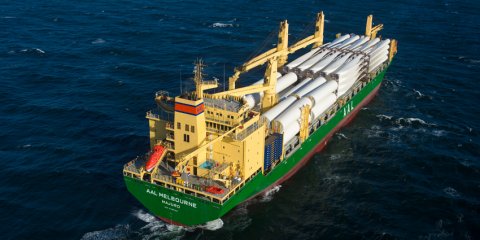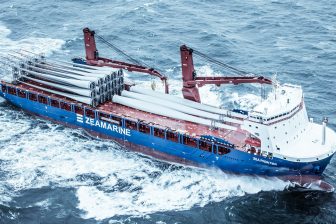
AAL vague about IMO 2020 approach
AAL is the second large multipurpose shipping company to publicly announce its strategy for the upcoming IMO 2020 sulphur regulations. But although the company is clear about switching to low sulphur compliant fuel, its calculation method remains vague.
Like many other shipping companies, AAL has decided that “migration to the use of low sulphur fuel will best meet the interests of the customers, trades and industries we serve globally.”
To recover the extra costs of the low sulphur fuels, which in some cases have been reported to be 50% more expensive than the currently used heavy fuel oil, the company will introduce a new calculation method to set the fuel price component of its freight rate.
This new method will come in effect on 1 September 2019 as the company starts “the arduous task” of preparing its fleet to be fully compliant with the IMO regulation by year’s end. However, AAL has not communicated how it will calculate the extra cost.
In an announcement, the company only states: “In the multipurpose shipping sector, we know well that one size does not fit all. Therefore, in consideration of the wide variety of cargo and trades that we handle and manage worldwide, we will be implementing various calculation methodologies to fairly share the increased cost of low sulphur fuel usage with our customers.”
On the contrary, competitor Zeamarine was a lot more specific when it announced its IMO 2020 recovery measures earlier this week. The Bremen-based carrier will also switch to low sulphur fuel and introduce a Low Sulphur Surcharge of USD 35 per freight ton for its liner services, while for its tramp services a new bunker adjustment clause will be put in place. Like AAL, Zeamarine will introduce these changes per September 1st this year as the company is preparing its fleet.
Call for transparency
The new IMO 2020 Sulphur Cap is one of the biggest regulatory changes in the shipping industry in over a decade. For many shippers, it will significantly increase their transport costs. Many large shippers and logistics providers have publicly criticised the way the shipping industry have handled the introduction of new low sulphur surcharges. Container shipping companies, in particular, were slammed for introducing vague new bunker calculation methods per January 1st 2019 to give customers time to “adjust” to the new fuel surcharges.
“The proposals from the shipping companies are really non-transparent. The final price also depends on speed, type of vessel and port stay. We are talking about a process that is absolutely unclear to me,” Jochen Gutschmidt, Global Freight Lead at Nestlé, said in an interview with Shippingwatch. His concerns have been echoed by other shippers and a variety of branch associations including the European Shippers Council (ESC), which on several occasions has pleaded for a more coordinated effort between shipping companies and their customers.
PCJ has reached out to AAL asking for more information about its new calculation methods.
You just read one of our premium articles free of charge
Register now to keep reading premium articles.



